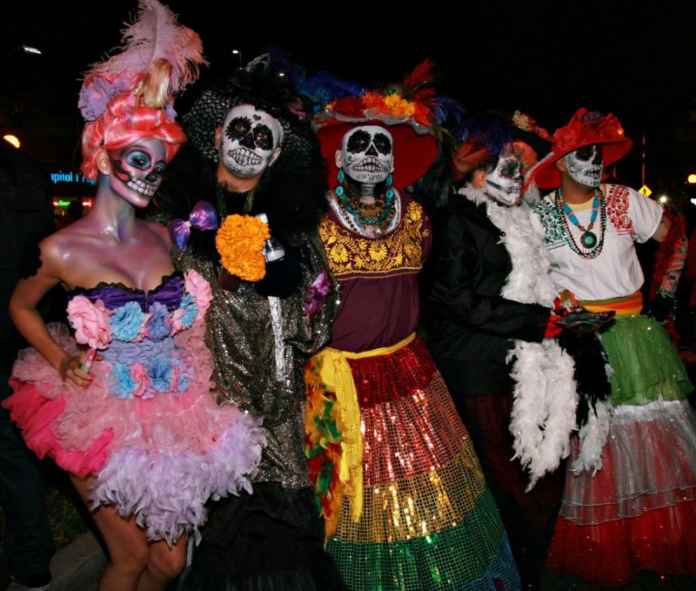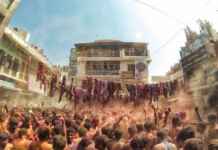The inhabitants of Mexico had been practicing a ritual that seemed to mock death , “Dia De Los Muertos” . On this “Day Of Dead” which is considered as a National Holiday in whole Mexico, a gathering of family and friends is observed at cemeteries and churches to pray, remember their beloved who had died. These celebrations occur in various countries in Central and South America, Europe and Asia where people celebrate according to their traditional customs.
ORIGIN AND BELIEF
The origin of this festival can be traced back to at least 3000years ago, where different civilizations that existed shared a common ideology,”a belief in afterlife”. The faith in the cyclic nature of life and death resulted in celebration of death rather than a fear of death. Death was considered to be a continuance of life just on another plane of existence.
In the Pre-Hispanic Era, “skulls” were kept as trophies which were displayed during rites thereby symbolizing –“Death and Rebirth.” This festival i.e the “Modern Day of Dead” fell in the 9th month of Aztech Calendar, about beginning of August and was celebrated for entire month. The festivities were dedicated to Goddess Mictecacihuatl, “Queen of Underworld “or “Lady of Dead”. The Aztecs believed that the deceased preferred to be celebrated rather than mourned. They believed that spirits return to earth for one day of the year to be with their families. Spirits of children and infants are honored on November 1 which is called “Dia de los Inocentes “(Day of Innocence) or “Dia de los Angelito”(Day of Little Angels). While spirits of deceased adults are honored on November 2 which is known as “Dia de los Muertos “or “Dia de los Muertos”(Day of Dead). Thus the two days are in a connection with the Catholic holidays of All Saints’ Day and All Souls’ Day.
CELEBRATIONS
People celebrate this day in their homes graveyards with full bliss and remembrance. At homes, people build private altar or small shrines which have Christian Cross , statues and pictures of Blessed Virgin Mary , pictures of deceased , scores of candles and offrendas (offerings).
The Symbol of the Day is the “Skull” which celebrants represent in masks called , foods , chocolate skulls that are inscribed with names of deceased on skull’s forehead. They pray, create poems called Calaveras (skulls), mocking epitaphs of friends, describing interesting habits, attitudes and funny anecdotes. Some people dress up as deceased and wear shells on their clothing so that when they dance the dead are awakened. They get tattoos, dolls of dead, make and exchange sugar skulls and prepare favorite dishes of deceased like “pan de muerto” (bread of dead) which can conceal a miniature skeleton.
People also go to cemeteries to be with the souls of the departed. During the three day period, families clean graves, decorates them with offrendas which include “Orange Mexican Marigold”(Tagetes ereca) called Cempauchil. In Modern Mexico this is called “Flor de Muerto”(Flower of Dead) with the power of attracting souls of dead to the offerings. Toys are carried for children and for adults bottles of tequila, mescal or jars of atole ,trinkets and favorite candies are taken. People believe that spirits of dead eat the spiritual essence of offrendas. These offerings are further consumed by celebrators but they think that the food’s nutrition value is lost. Pillows and blankets are also carried for the rest of the deceased. People believe that possessing Day of Dead belongings can bring good luck. In towns of Mixqeuc , Patzcuaro an Janitzo people spend all night at graves while in other places picnics are observed at these sites.
The event comes out to be a social gathering with combination of festivity and introspection as everyone honors their loved ones, communicating with their spirits. On the other hand, it reflects their own mortality in circle of life and death. Thus Mexican live alongside death and death is laughed at in its face.










